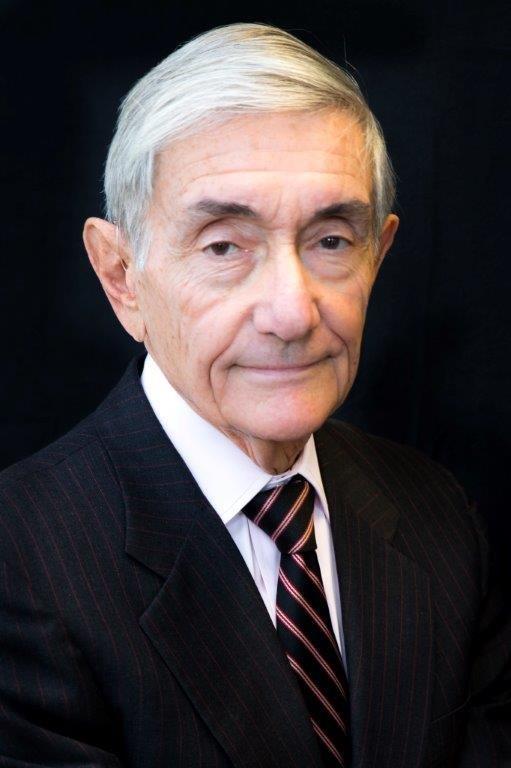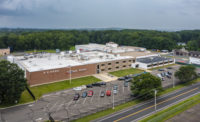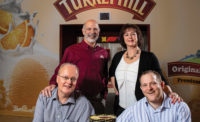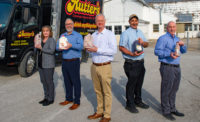Whoever said you “can’t teach an old dog new tricks” has clearly never heard of Lynnfield, Mass.-based HP Hood LLC (Hood). The company was founded by Harvey Perley Hood in 1846 when the United States comprised only 29 states and was embroiled in the Mexican-American War. But just like baseball — another American classic that also started 175 years ago — the company has grown and adapted to stay relevant nearly two centuries later.
What originally began as HP Hood & Sons in Charlestown, Mass., has since turned into a dairy giant — coming in at No. 21 on Dairy Foods 2021 Dairy 100 list of the largest dairy companies in North America. The company has gone through a number of changes in the past 175 years, but its commitment to producing the highest-quality products remains.
“Today, Hood maintains that priority on quality and innovation, and it has been the driving force behind many of the company’s major milestones,” says Lynne Bohan, group vice president, communications and government affairs.
Nearly two centuries of quality
Hood achieved many milestones in the first decades of its existence. In 1894, the company hired its first food scientist and began selling pasteurized milk along with “modified baby milk,” says Bohan. Soon afterward, Hood introduced its first ice cream line out of Hood Creamery retail stores.
Other important events early on included the introduction of “New England’s beloved Hoodsie Cups” in the 1940s and the launch of Nuform low-fat milk in 1969, Bohan notes. The Nuform line grew to include milk, ice milk, yogurt, and cottage cheese.
“Three years later, the company changed its name from HP Hood & Sons to HP Hood Inc. and invented Frogurt, the first frozen yogurt in the U.S. based on a request for a low-fat frozen dessert from Bloomingdale's department stores,” says Bohan. “In 1991, Hood produced its first non-dairy product, Hood nondairy Country creamer, and shortly [afterward] became the nation's leading producer of extended-shelf life (UHT) dairy products.”
The current owners of Hood — the Kaneb family — came into the picture in 1995, notes Gary Kaneb, president. Under his father John Kaneb’s leadership, they purchased the company from a cooperative and brought their business acumen from years spent in the petroleum industry to take Hood into the present day.
Gary Kaneb says while going from oil to dairy might seem like a weird jump, it actually was a logical move. In the early 1990s, the Kanebs formed Gulf Oil L.P. in partnership with Cumberland Farms Inc. (CFI) — a dairy that had gotten into oil through selling petroleum products at its convenience stores. Through this relationship with CFI, the Kanebs became aware that Hood was available for purchase.
“We had done nothing but drink a lot of milk and eat ice cream. That was our history in the dairy business. We had no background whatsoever,” Gary Kaneb notes.
He explains that others were only interested in purchasing parts of Hood’s business, but his family was the only interested party who wanted to buy the entire business. And when the Kanebs purchased Hood, they brought an entrepreneurial mindset that had been lacking in the company when it was owned by a remote cooperative. They started by evaluating which parts of Hood’s business had the most growth potential, which at that time was mainly its extended-shelf-life (ESL) offerings.
Hood had an ESL plant in Oneida, N.Y., Gary Kaneb notes. The decision was made to build another in Winchester, Va., which became the largest ESL plant in the country. The Kanebs continued to invest in the company by building more plants and expanding product offerings.
“Since then, Hood has extended its roots from a New England dairy company to a national food and beverage manufacturer with 13 processing plants across the country,” emphasizes Gary Kaneb. “While the company has grown, we’ve kept in place the values that shaped Hood — a commitment to quality and innovation, which ensures the consumer receives the best product possible.”
And the company continues to grow. Its 2020 sales were $2.7 billion —up from $2.4 billion in 2019.
“The commitment to ensuring the consumer receives the best product possible product is rooted in the company’s DNA — superior quality checks, high-quality processing, working with the best farmers and suppliers,” says Bohan
Multidimensional marketing approach
Hood’s massive size is reflected in its plethora of product offerings and distribution channels. All told, the company manufactures more than 4,000 SKUs, spanning milk, ice cream, cream, cottage cheese, sour cream, yogurt, eggnog, and more. Its products are found in most channels, including supermarkets, club stores, convenience stores, food service, schools/universities, nursing homes, and the export market, explains Hood. The company also manufactures private-label offerings and does co-packing.
Recent product successes include the relaunch and restaging of Hood’s LightBlock milk bottle, which was first introduced soon after the Kanebs took over the company. The bottle’s purpose is to protect the taste and freshness of milk, Gary Kaneb points out.
“We first launched that in the late '90s,” explains Chris Ross, senior vice president of marketing and R&D. “I think it was time to relaunch or restage it [and] educate consumers on why it's important, what value it brings to them.”
For the relaunch, Hood staged a 360-degree marketing campaign that included new television ads, a website, a key influencer campaign and a combination of social and digital ads. Ross says this approach is consistent with Hood’s ideas around marketing dairy. He believes that companies need to take the story of their products to consumers, not just assume that consumers will continue to purchase dairy products because they have in the past.
“We really believe at Hood that products aren't going to sell themselves,” he adds. “In this day and age, you have to meet the consumer where she is and explain to her why she should care about this product, this package, this benefit for herself and her children.”
Ross says he’s been happy with the results of the marketing campaign, and Hood has seen growth in the sales of its milk products in recent years.
“We really turned on the marketing on [the Hood brand] over the last several years,” he points out. “In New England, while the category was flat to declining, Hood has been up multiple points and seeing growth year-on-year.”
Ross says he’s also very proud of Hood’s marketing efforts around cottage cheese. The company has the No. 1 sales position in that subcategory in the New England area.
“Our recipe of ... loud marketing and innovation has really proven to be the difference here,” he notes.
On a national level, Lactaid Protein milk, which is manufactured by Hood, is another recent success. The offering is lactose-free milk with 13 grams of protein. The product’s introduction had to be paused due to capacity constrictions during the COVID-19 pandemic, but it was relaunched in January 2021, Ross remarks.
“This is really for the lactose-free consumer that's looking for more nutrition, more protein and superior mouthfeel and texture in their product,” he says. “Our core consumer is telling us that she really loves it and it really gives her a reason to stay in dairy as opposed to trying some other alternatives.”
To market Lactaid Protein milk, the company turned to digital and social ads, including online video. It also used some couponing, but mainly focused on crafting a “targeted message,” Ross points out.
Commitment to innovation
In terms of creating new products, Hood follows an “always-on” innovation model, as opposed to setting aside a part of the year to dedicate to product development, Ross explains.
“We found that if you started and stopped and started and stopped, you never really could get real traction and real teeth into innovation,” he says.
Within this process of “everyday innovation,” Hood considers national and global trends, consumer feedback, and the latest technology to generate product ideas. And it thinks in terms of launching products a few years in the future — to ensure they make it to the finish line, explains Ross. (For example, the company was looking at potential products for 2023-2024 at the time of Dairy Foods’ interview).
Once someone has an initial idea for a product, Hood does several things more or less simultaneously, Ross says. The company figures out if it is doable to manufacture, would be profitable, and if “the actual product in real life lives up to the idea.” At this stage, Hood would take a potential offering to the consumer for feedback. And if it doesn’t meet their expectations, the company would pull the plug.
If consumers like the creation, it would continue through Hood’s product development process. The rest of the path depends on what sort of a timeline the company is trying to meet, Ross notes. For example, sometimes the company would work through marketing and packaging at the same time if a retailer has an earlier deadline. So while Hood tries to work years in the future, it also is agile enough to fast-track product development if that is what is needed to meet a given timeframe.
“Hood's always been a really entrepreneurial, roll-up-your-sleeves kind of company,” Ross says. “So even as we build out more process and more discipline, we never lose that ability to be agile.”
An upcoming product introduction that Ross is excited about is the Hood New England Creamery ice cream, which is set to launch in early 2022. The line is premium ice cream featuring classic New England flavors. Hood spent a number of years getting consumer feedback to ensure that it would meet expectations.
“Every flavor ties back to a location within a New England state,” Ross says. “We want to create that experience that's unique to that location and, you know, if consumers can't be there eating it in real life, this will really be the next best thing.”
Also on the docket is an expansion of Hood’s cottage cheese offerings with the introduction of an Everything Bagel Seasoning flavor. The company also is crafting innovative new milk products for 2022 or 2023 that will be competitive with plant-based ones.
“I think innovation and marketing is really key to staying relevant with the consumers that are shopping around for different alternatives,” Ross explains. “Millions of people are consuming dairy and dairy milk every single day. I'm still quite bullish that with some innovation and value-added milk we can keep those people in dairy.”
Gary Kaneb agrees that while dairy alternatives are something the industry has to reckon with, Hood is committed to continuing to invest in dairy.
“While consumers are increasingly exploring alternative beverages to find what meets their needs, milk remains an important part of households — particularly among families with young children,” he says.
In the future, Ross says that Hood’s strategy to continue to expand market share will be to carry on with its forward-looking approach to product development and marketing. Hood values this fresh perspective, even though it is one of the oldest food companies in the country.
“I think we have to always accept that consumers' tastes are going to evolve and change, and they want to try new things, and we have to go along for the ride with them,” Ross notes. “And that will continue to be part of our strategy moving forward.
“We're celebrating our 175th anniversary this year. We have not been around for 175 years for nothing,” he adds. “There's an old saying in marketing … ‘the fruit is in the roots.’ And so Hood, from its earliest days in New England, [was] innovative. And that sort of innovative spirit has really powered us through to today. So, when in doubt, we always try to go back to that.”
In Memoriam
 On Aug. 29, 2021, Lynnfield, Mass.-based HP Hood LLC (Hood) lost its chairman and CEO, John A. Kaneb, who led the company since the Kaneb family purchased Hood in 1995.
On Aug. 29, 2021, Lynnfield, Mass.-based HP Hood LLC (Hood) lost its chairman and CEO, John A. Kaneb, who led the company since the Kaneb family purchased Hood in 1995.
In addition to his numerous accomplishments at Hood and his previous business ventures, John Kaneb was devoted to philanthropic efforts, including serving as director of The Innocence Project — an organization that seeks to exonerate innocent prisoners and prevent wrongful convictions.
“My father was a very good and great man,” Gary Kaneb, president, wrote in a letter to Hood staff after John Kaneb’s passing. “He was a successful entrepreneur leading family businesses in the petroleum and dairy industries and was a renowned philanthropist. He affected the lives of many people with his wisdom, his empathy, and his generosity.”
Notably, Gary Kaneb explains, his father was a well-connected man, and he would go out of his way to use these connections to benefit others — especially his employees. For example, if he ever heard anyone was having medical issues, he’d often say, “I’ll make a call for you,” and would use his medical connections to ensure that person got the best care. He also built relationships with people who worked at Hood across all levels — from the corporate office to the company’s many plants.
“And that was across the board,” Gary Kaneb explains. “So he was genuinely getting involved in helping employees.”
For Gary Kaneb, working with his father was a partnership. He began working in the oil industry with John Kaneb before his family took over Hood.
“We had a relationship that you can't replicate,” he says. “I mean for 36 years, we talked to each other or saw each other virtually every single day.”
Gary Kaneb says his father’s legacy at Hood will be felt in the company’s continued entrepreneurial spirit.
“My father will undoubtedly be remembered for his love of the Red Sox and for one of his most memorable phrases at Hood — ‘You take care of us and we will take care of you’ — and that he did,” Gary Kaneb continued in his letter. “Our loss will be deeply felt and he will be missed immensely by us all.”
Product and historical photos courtesy of HP Hood.







